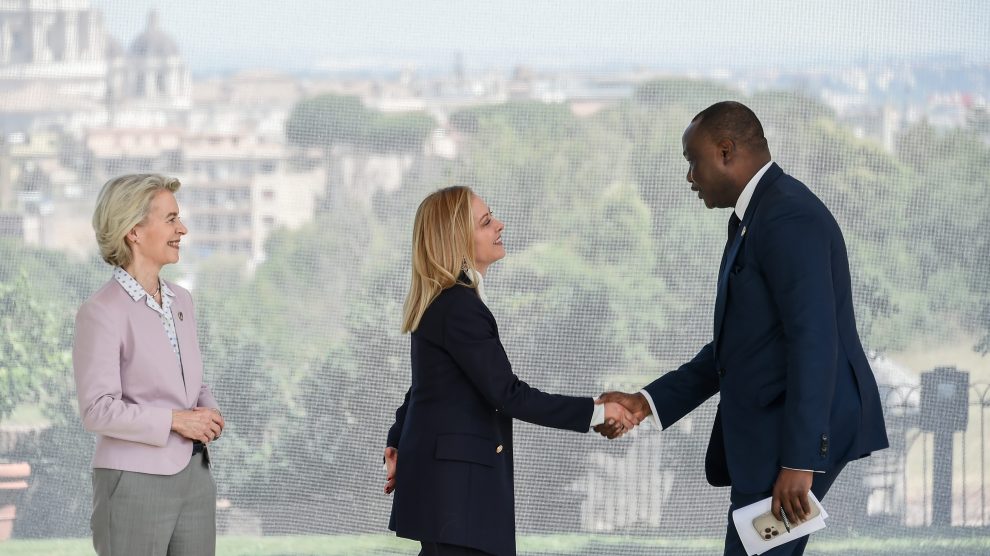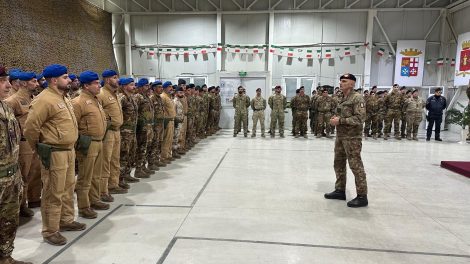Decoding the news. The Mattei Plan is the strategic framework through which Italy seeks to strengthen its international standing by supporting sustainable development across Africa — the continent of the future.
- Rome aims to address the structural drivers of migration, promote regional stability, establish long-term economic partnerships, and present a cooperation model that stands apart from those promoted by actors such as China and Russia.
- The report submitted to Parliament confirms that the Plan has gained traction both financially and diplomatically.
- What remains to be consolidated is its implementation capacity and executive delivery.
Strategic directions. The latest iteration of the Plan is shaped by three guiding priorities for 2025.
- Geographic expansion: five new African countries have joined the initial group of nine priority partners, signalling Rome’s intention to broaden the scope of engagement in areas of emerging strategic relevance.
- Renewed focus on international partnerships, particularly with the European Union: this has materialised through the Global Gateway framework, with a deepening alignment formalised at the 20 June summit held at Villa Pamphilj in Rome.
- Joint projects include major infrastructure initiatives such as the Lobito Corridor, alongside energy and digital development programmes.
- Political commitment to addressing sovereign debt: Italy has announced the conversion of approximately €235 million in bilateral credits into development projects to be implemented over the next decade.
- While symbolically important, the operational impact of this pledge remains to be tested.
The financial architecture. The report outlines a multilayered financial strategy, combining national instruments, multilateral contributions, and a prospective role for private capital.
- Among the domestic tools now fully operational are a €500 million “Africa Facility” managed by Cassa Depositi e Prestiti; a €200 million “Africa Measure” via Simest; and a SACE guarantee programme with a ceiling of up to €2 billion.
- These are flanked by a dedicated multilateral fund channelled through the World Bank and the African Development Bank, which currently includes €140 million in Italian contributions and $25 million already provided by the United Arab Emirates.
Implementation status. At the heart of the report lies a comprehensive mapping of 64 individual initiatives, distributed across key strategic sectors.
- The education, training and cultural sector accounts for the largest share, with 24 initiatives underway, followed by energy (14), water and infrastructure (12), agri-food systems (10), and healthcare (4).
- Yet the level of project maturity remains uneven, suggesting a framework still under construction, with varying speeds of execution.
- The report outlines a dual pace: 29 initiatives are already operational, while 35 remain in early or exploratory stages — reflecting the inherent complexity of translating plans into measurable outcomes.
Structural constraints. The report highlights two structural challenges.
- First, a lack of transparent, accessible information on project status, timelines, and stakeholders hinders public understanding and policy coordination.
- Second, businesses, NGOs, and public actors still face uncertainty about how to engage with the Plan, due to the absence of clear procedures for participation and implementation.
What we’re watching
The Plan’s strategic framework appears more consolidated, and its governance structure increasingly defined.
- Yet the most critical challenge lies ahead: turning numerous “initiated” or “underway” announcements into tangible, measurable results—for African communities, and for Italy’s long-term credibility in the region.
- The next step must focus on accelerating execution, clarifying access channels, and delivering on the core promise of the Mattei Plan—not as a vision, but as a functioning, operational portfolio of projects on the ground.





